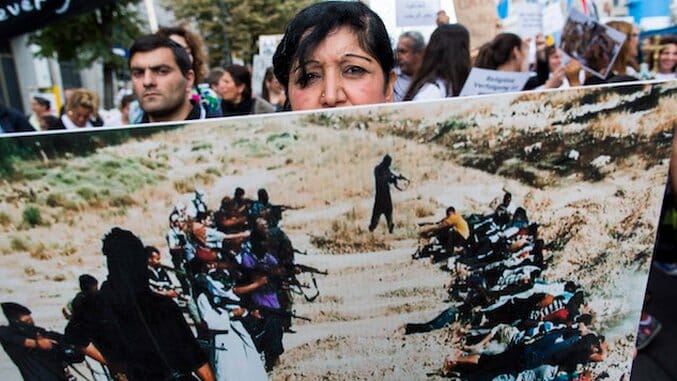Puk Damsgård’s The ISIS Hostage Examines the Horror of an Irregular War
Karsten Coall/Getty Images
The ISIS Hostage: One Man’s True Story of Thirteen Months in Captivity is a case study in what might be called the New War Journalism. Puk Damsgård’s unadorned chronicle of Danish photojournalist Daniel Rye’s capture, confinement and eventual release delivers a lesson as astringent as medicine: in the modern era of irregular warfare, battlefields are no longer demarcated by flags or trenches but by ideology and memory. Beyond bombs and drones and Kalashnikovs, wars are now fought via emotion and media, perception and pressure. The modern front is personal.
Few acts of unconventional warfare are more personal than kidnapping. Long a standard fundraising tactic for various piratical and criminal organizations, kidnapping became de rigueur among the Syrian Civil War’s clashing factions—especially the Islamic State. ISIS takes hostages for financial gain and for a darker reason as well: to serve as sacrificial revenge killings, brutally mutilated political pawns whose blood is worth more than any dollar amount.
 Rye was a competitive gymnast when he fell in love with photography. Shooting his teammates’ travels and his own wanderings, he refined his passion under the tutelage of Danish war photographer Jan Grarup. After an injury cut his gymnastics career short, Rye served as Grarup’s assistant and accompanied him on an assignment to Somalia. While there, his experience shooting a soccer game amongst the bombed-out buildings of Mogadishu inspired him to chronicle not the combatants and corpses of war but the people who survive in its very midst. Noticing a lack of such imagery coming out of Syria, Rye arranged for a trip just inside the country’s border.
Rye was a competitive gymnast when he fell in love with photography. Shooting his teammates’ travels and his own wanderings, he refined his passion under the tutelage of Danish war photographer Jan Grarup. After an injury cut his gymnastics career short, Rye served as Grarup’s assistant and accompanied him on an assignment to Somalia. While there, his experience shooting a soccer game amongst the bombed-out buildings of Mogadishu inspired him to chronicle not the combatants and corpses of war but the people who survive in its very midst. Noticing a lack of such imagery coming out of Syria, Rye arranged for a trip just inside the country’s border.
-

-

-

-

-

-

-

-

-

-

-

-

-

-

-

-

-

-

-

-

-

-

-

-

-

-

-

-

-

-

-

-

-

-

-

-

-

-

-

-








































